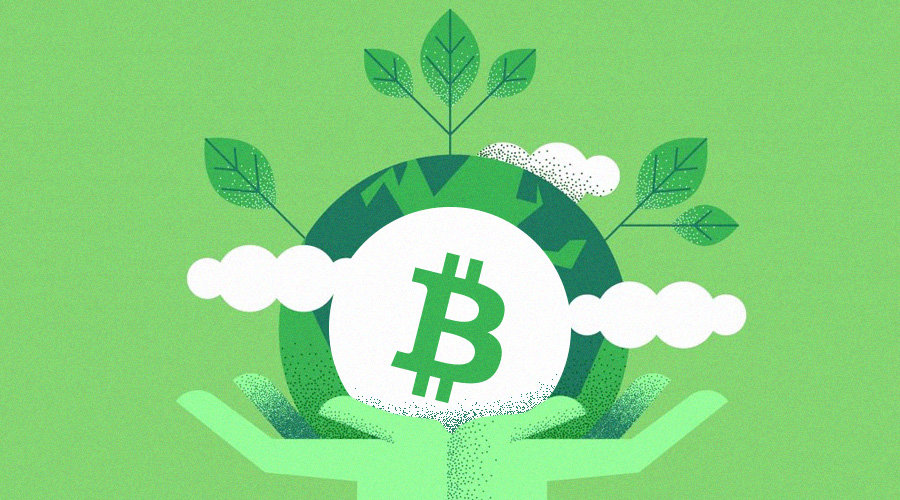
Green cryptocurrencies have gained momentum as a sustainable and responsible alternative to traditional digital currencies. Several projects have successfully implemented green cryptocurrency initiatives, demonstrating the feasibility and benefits of responsible sourcing. In this article, we explore noteworthy case studies that showcase the successful implementation of green cryptocurrency projects.
SolarCoin: Empowering Renewable Energy
SolarCoin is a prime example of a green cryptocurrency project that aims to promote renewable energy generation. The initiative rewards solar power producers with SolarCoins based on the amount of solar energy they generate. By incentivizing the adoption of solar power, SolarCoin contributes to reducing reliance on fossil fuels and encourages the growth of sustainable energy sources.
Key Points:
- SolarCoin rewards solar energy producers with cryptocurrency.
- Incentivizes the adoption of solar power and reduces reliance on fossil fuels.
- Supports the growth of sustainable energy generation.
Chia Network: Environmentally Friendly Blockchain
Chia Network is a green cryptocurrency project that addresses the environmental concerns associated with traditional blockchain systems. It utilizes a unique consensus algorithm called Proof of Space and Time, which relies on unused storage space rather than energy-intensive mining. This approach significantly reduces the carbon footprint of cryptocurrency mining while maintaining a secure and decentralized network.
Key Points:
- Chia Network uses Proof of Space and Time for environmentally friendly mining.
- Relies on unused storage space instead of energy-intensive mining.
- Achieves secure and decentralized operations with a reduced carbon footprint.
Power Ledger: Decentralized Energy Trading
Power Ledger leverages blockchain technology to facilitate peer-to-peer energy trading and incentivize renewable energy production. The platform allows individuals and businesses to trade excess energy they generate from renewable sources, promoting local energy self-sufficiency and reducing reliance on centralized power grids. By enabling direct energy transactions, Power Ledger encourages the adoption of clean energy and empowers communities to become active participants in the renewable energy market.
Key Points:
- Power Ledger enables peer-to-peer energy trading using blockchain.
- Promotes local energy self-sufficiency and reduces reliance on centralized power grids.
- Facilitates the adoption of clean energy and empowers communities.
EcoCoin: Environmental Conservation Incentives
EcoCoin focuses on incentivizing environmentally friendly actions through its green cryptocurrency platform. Users earn EcoCoins by participating in activities that contribute to environmental conservation, such as recycling, reducing carbon emissions, or supporting sustainable initiatives. The project aims to raise awareness and reward individuals for their positive impact on the environment, fostering a culture of sustainability and responsible behavior.
Key Points:
- EcoCoin incentivizes environmentally friendly actions through its cryptocurrency.
- Rewards users for participating in activities that contribute to environmental conservation.
- Aims to raise awareness and foster a culture of sustainability.
Climatecoin: Financing Climate Change Projects
Climatecoin is a green cryptocurrency project that seeks to provide funding for climate change mitigation and adaptation projects. It allows individuals and organizations to invest in initiatives aimed at reducing greenhouse gas emissions, promoting renewable energy, or supporting sustainable land use practices. By channeling investments into climate-focused projects, Climatecoin plays a crucial role in mobilizing resources to combat climate change.
Key Points:
- Climatecoin enables investments in climate change mitigation and adaptation projects.
- Supports initiatives to reduce greenhouse gas emissions and promote renewable energy.
- Channels resources towards combating climate change.
Impact on Financial Inclusion
a. Empowering Underserved Communities: Discuss how green cryptocurrency projects can contribute to financial inclusion by providing access to digital financial services for underserved populations. Explore examples of initiatives that target regions with limited banking infrastructure or marginalized communities, enabling them to participate in the green cryptocurrency economy.
b. Microtransactions and Microlending: Explore the potential of green cryptocurrencies in facilitating microtransactions and microlending, particularly in areas where traditional financial systems are lacking. Highlight how these initiatives can empower individuals and small businesses, fostering economic growth and resilience.
Scalability and Energy Efficiency

a. Layer 2 Solutions: Discuss the implementation of Layer 2 solutions, such as sidechains or off-chain protocols, to improve scalability and energy efficiency in green cryptocurrency projects. Explain how these solutions can alleviate network congestion, reduce transaction fees, and minimize energy consumption.
b. Proof of Stake (PoS): Explain the concept of Proof of Stake consensus mechanisms and their relevance to green cryptocurrencies. Discuss how PoS algorithms require less computational power and energy compared to traditional Proof of Work (PoW) systems, making them more environmentally friendly and sustainable.
Social and Environmental Impact Measurement
a. Metrics and Standards: Discuss the development of metrics and standards for measuring the social and environmental impact of green cryptocurrency projects. Highlight the importance of transparent reporting and the adoption of frameworks that assess factors like carbon emissions reduction, community engagement, and sustainable development goals.
b. Verification and Auditing: Explore the role of independent verification and auditing in assessing the social and environmental impact of green cryptocurrency initiatives. Discuss how third-party organizations can provide credibility and assurance by conducting audits, verifying claims, and ensuring adherence to responsible sourcing practices.
Collaboration with Sustainable Initiatives
a. Partnerships with Environmental Organizations: Discuss the collaborations between green cryptocurrency projects and environmental organizations. Highlight examples of partnerships that support conservation efforts, climate change mitigation projects, or initiatives focused on biodiversity preservation.
b. Integration with Sustainable Technologies: Explore the integration of green cryptocurrencies with other sustainable technologies, such as smart grids, Internet of Things (IoT) devices, or decentralized renewable energy solutions. Discuss how these integrations can create synergies and enhance the overall sustainability of the projects.
Government Support and Policy Frameworks
a. Incentive Programs: Discuss government incentive programs aimed at supporting green cryptocurrency projects. Highlight tax incentives, grants, or subsidies provided to initiatives that promote renewable energy generation, responsible sourcing, or sustainable development.
b. Regulatory Frameworks: Explore the evolving regulatory landscape for green cryptocurrencies. Discuss the importance of clear regulations that encourage responsible sourcing practices, protect investors, and ensure compliance with environmental and social standards.
Tokenization of Sustainable Assets
Tokenization is revolutionizing the representation and trading of sustainable assets within the green cryptocurrency ecosystem. By tokenizing assets such as renewable energy certificates, carbon credits, or sustainable real estate, green cryptocurrency projects unlock liquidity and facilitate transparent trading in these markets. Tokenization enables fractional ownership, allowing investors of all sizes to participate in sustainable asset markets. Additionally, it provides transparency and traceability, as each token represents a verifiable claim on the underlying asset. This innovative approach not only enhances liquidity and accessibility but also promotes the growth of sustainable sectors by attracting investment and aligning financial flows with environmental and social goals.
Social and Governance Impact
Green cryptocurrency projects extend beyond environmental considerations to address social and governance impact. These initiatives prioritize community development, fair labor practices, and democratic decision-making within the cryptocurrency ecosystem. They actively engage stakeholders, including local communities and marginalized groups, in shaping the direction of projects and distributing benefits equitably. By emphasizing social equality, diversity, and inclusivity, green cryptocurrency projects contribute to the overall well-being of communities. Through transparent governance structures and mechanisms for community participation, they foster trust, accountability, and collective ownership, ensuring that the benefits of these initiatives are shared by all.
Education and Awareness
Education and awareness campaigns play a crucial role in promoting green cryptocurrencies and responsible sourcing practices. These initiatives focus on educating individuals, businesses, and investors about the environmental and social benefits of green cryptocurrencies, encouraging their adoption and support. Through educational materials, workshops, and events, they provide information on the underlying technologies, sustainable practices, and the positive impact of responsible sourcing. By raising awareness about the potential of green cryptocurrencies to drive positive change, these campaigns empower individuals to make informed choices aligned with their values, leading to a more sustainable and responsible financial ecosystem.
Cross-Sector Collaboration
Advancing responsible sourcing within green cryptocurrency projects requires cross-sector collaboration. Partnerships between the cryptocurrency industry, environmental organizations, academia, and government agencies are crucial to leverage expertise, resources, and knowledge-sharing for the development of sustainable practices. These collaborations foster innovation, promote best practices, and drive the adoption of responsible sourcing standards. By bringing together diverse stakeholders, green cryptocurrency projects can benefit from multidisciplinary perspectives, ensuring the integration of environmental, social, and economic considerations. Through collective efforts, cross-sector collaborations contribute to the creation of a more resilient and sustainable cryptocurrency ecosystem.
Privacy and Security
Privacy and security are paramount considerations in green cryptocurrency projects. To ensure the privacy of user data and transactions, robust encryption algorithms and privacy-enhancing technologies are implemented. Secure and decentralized networks protect against unauthorized access and fraudulent activities. Additionally, advanced cryptographic techniques, such as zero-knowledge proofs, are employed to enable transaction verification while maintaining privacy. By prioritizing privacy and security, green cryptocurrency projects build trust among users and ensure the integrity of the system, fostering a safe and reliable environment for financial transactions and sustainable practices.
Conclusion
In conclusion, these case studies highlight the successful implementation of green cryptocurrency projects across various domains. SolarCoin, Chia Network, Power Ledger, EcoCoin, and Climatecoin exemplify the potential of responsible sourcing and sustainable practices within the cryptocurrency industry. These initiatives not only contribute to environmental conservation but also demonstrate the feasibility and benefits of adopting green alternatives in the digital currency landscape.